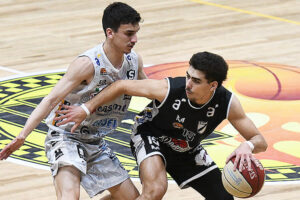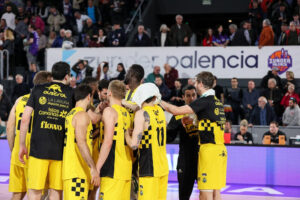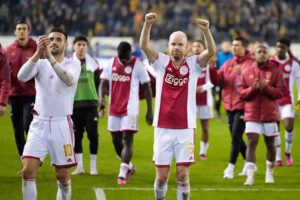Attribute it to the incessant need to create “something”; but the all-time “record” (found in quotes for a reason) for the most goals in a career, which Cristiano Ronaldo pursues or has already surpassed (the Portuguese scored his 760th goal on January 21; beating the goal Josef Bican’s 759, or still holding him behind Bican’s 805 goal mark, as measured), it’s just not, let’s say… “something”.
We don’t talk about when Hank Aaron chased the Babe Ruth record, only to be chased by Barry Bonds a generation later; or seeing LeBron James getting closer to Karl Malone and Kareem Abdul-Jabbar, when this happens. It is an artifice. By its nature, soccer does not work like that: it is a broad, messy and poorly organized sport. Additionally, football makes less sense of history. (Even the most casual baseball fans probably know who Bonds and Mark McGwire are; additionally, they know who were the men whose records were broken by the former: Aaron and Roger Maris. Are casual fans of English football so familiar with their equivalents, namely Dixie Dean and Jimmy Greaves?)
So why is the all-time goal record really flawed? Let me tell you why.
1 Related
First and foremost, this mark is based on the sum of goals converted in matches played with national teams and clubs in the same race; something that, to be honest, no one did until recently. Had he done so from the beginning, the previous record-holder footballer would be a well-known figure, even if he was mentioned only as a legendary and unreachable man who set trends; as is the case with Cy Young, with his 511 victories in the world of baseball, or Don Bradman with his Test Average of 99.94 in cricket. But is not the case. Ask around. Poll your friends. If someone tells you that Josef “Pepi” Bican was the top scorer in football history until last month, it is probably one of three options: Czech, football historian or a liar.
Additionally, we have the fact that the entire premise behind the record is flawed from its starting point. It takes into account the “official” matches (namely, League matches and Cup competitions) at the club level, although it also adds the friendlies played at the international level. We are talking about adding apples to oranges. Why yes in one case and not in the other? Are we sure that one of those international friendlies at the end of the season against Latvia, on a rainy Tuesday, with a maximum of 10 changes per team, has the same weight as a competitive match with a club?
The other important issue is that, to give records meaning, we need reliable data that can be accurately compared, and simply put, we don’t have it. Consequence of the nature of this sport. There is no centralized authority that maintains historical records, and professional sport evolved for many years within its characteristic messy style, until in the 1970s it managed to achieve a semblance of order. And that’s without taking into account the minor issues, such as wars, political disputes, and nationalism, that have gotten in the way of sport.
Cristiano Ronaldo may be the all-time top scorer, but while the exact historical totals are unknown we must consider other ways to distinguish soccer legends. MARCO BERTORELLO/AFP via Getty Images
Let’s take a look at the statistics for Bican, whose lifetime total scorers are as follows:
– 703, if we only take into account goals scored in the first division and international matches; or
– 703, if we only take into account goals scored in the first division and international matches; or
– 800, if we add only goals scored with first teams and international commitments; or
– 805, if we pay attention to sites dedicated to the history of football, such as rsssf.com, although their managers have admitted that they lack some data (which means that Bican could have marked a higher figure); or
– 805, if we pay attention to sites dedicated to the history of football, such as rsssf.com, although their managers have admitted that they lack some data (which means that Bican could have marked a higher figure); or
– 5,000, if we believe Bican himself, who was probably kidding.
So how many goals did he actually score? We are not going to force Cristiano to play with more than 80 years so that he adds 5,000 points, right? (Although that said, it likely does.)
Don’t look to FIFA to help us with this dilemma either. Their representatives will reply that they only keep scoring records in tournaments organized by said institution: Soccer World Cups and similar events. And with good reason. Why stir up the hornet’s nest?
(Beware, we do not intend to belittle Bican. The Czech was one of the greatest footballers of his era, a figure with the “wunderteam” of the Austrian national team in the 1930s and who, just before the start of the war , left the Nazis and chose to play for the country of his ancestors, rather than his homeland, spending much of his career in what was then Czechoslovakia).
Bican is not the only difficult player to compare on objective terms. Pelé, synonymous with scoring prowess, finds himself in a similar situation. Brazil didn’t have a national league until 1971, when “O Rei” was 30 years old. Until then, he had played most of his league games wearing the Santos jersey at the Paulista championship, Sao Paulo’s regional circuit. Sao Paulo was probably the best region in the country for football; however, Pelé did not play for some of the main clubs in the country (such as Flamengo, Botafogo, Gremio or Flamengo) on a regular basis.
“Pepi” Bican, here in the top row and with his arms crossed, scored his goals in a time that was difficult to measure in terms of goals and totals, but that fact should not detract from his achievements. Schirner Sportfoto-Archiv/picture alliance via Getty Images
However, this does not mean that Pelé has not faced first-rate rivals. Apart from the powers of the state of Sao Paulo, such as Palmeiras, Corinthians and Sao Paulo, it played Copa Libertadores (South American equivalent of the European Cup), the Taça Brasil (national cup in which the different regional champions face each other) and, for of course, multiple prestigious friendlies. If you download a spreadsheet with all of Pelé’s goals, you will see that, in most summers, the Brazilian went on a world tour (for example, Santos traveled to Europe in the summer of 1963, playing nine games in four weeks), as well as being part of different regional star teams and even playing early in his career with his country’s coast guard.
All tours and all-star teams do not add to the “official” account (regardless of what that means); However, as people in Brazil say, Pelé wanted to face the best in the world and this was his way of doing it (By the way, that’s how we got to his famous total of 1,283 goals).
 Serie A, Copa del Rey, UFC, thousands of live events, exclusive original series and much more, all in HD. Subscribe here
Serie A, Copa del Rey, UFC, thousands of live events, exclusive original series and much more, all in HD. Subscribe here
All of the above should be enough to convince you of the absurdity of these comparisons based on scoring records; although we could go further. We can argue that Bican scored many of his goals during World War II, at the same time that many top players were serving in the military and many others suffered from malnutrition. Or that Pelé, for political reasons, never had permission to move to Europe and compete at that level.
It is not their fault that they played in another era, when the world was different and, apart from that, war and political disputes interfered with their competitive environment. All of the above does not diminish the merits of Bican and Pelé, who belong to the list of the greatest of all time in their own right. It is simply a matter of understanding that we cannot use historical goal records to measure the greatness of a footballer. Has no sense.
Man, I go further. Although there are valid arguments to say that Cristiano and Lionel Messi (who is younger than the first and whose statistics could be at a similar level) can be the object of comparisons as they are contemporaries, the idea still seems silly. True, both score goals in industrial amounts, despite not being born center-forward. However, are Messi and CR7 the best benchmarks? In the last 20 years, no player in Europe’s four major leagues has scored more than 40 goals in league games. Messi and Cristiano have achieved it, three times each. Between them, they have scored a minimum of 30 league goals in 16 seasons, surpassing the sum of the rest of the center-forwards who have played in Europe in the last two decades. And only two, other than Messi and Cristiano, have achieved it more than once.
If you need goal totals to certify your greatness, give it a try, just to prove it. But it really isn’t necessary, is it?
Leave the historical scoring totals to other sports. Soccer is much bigger than statistics. Not to mention that making comparisons between its different eras represents a much more complicated exercise.












